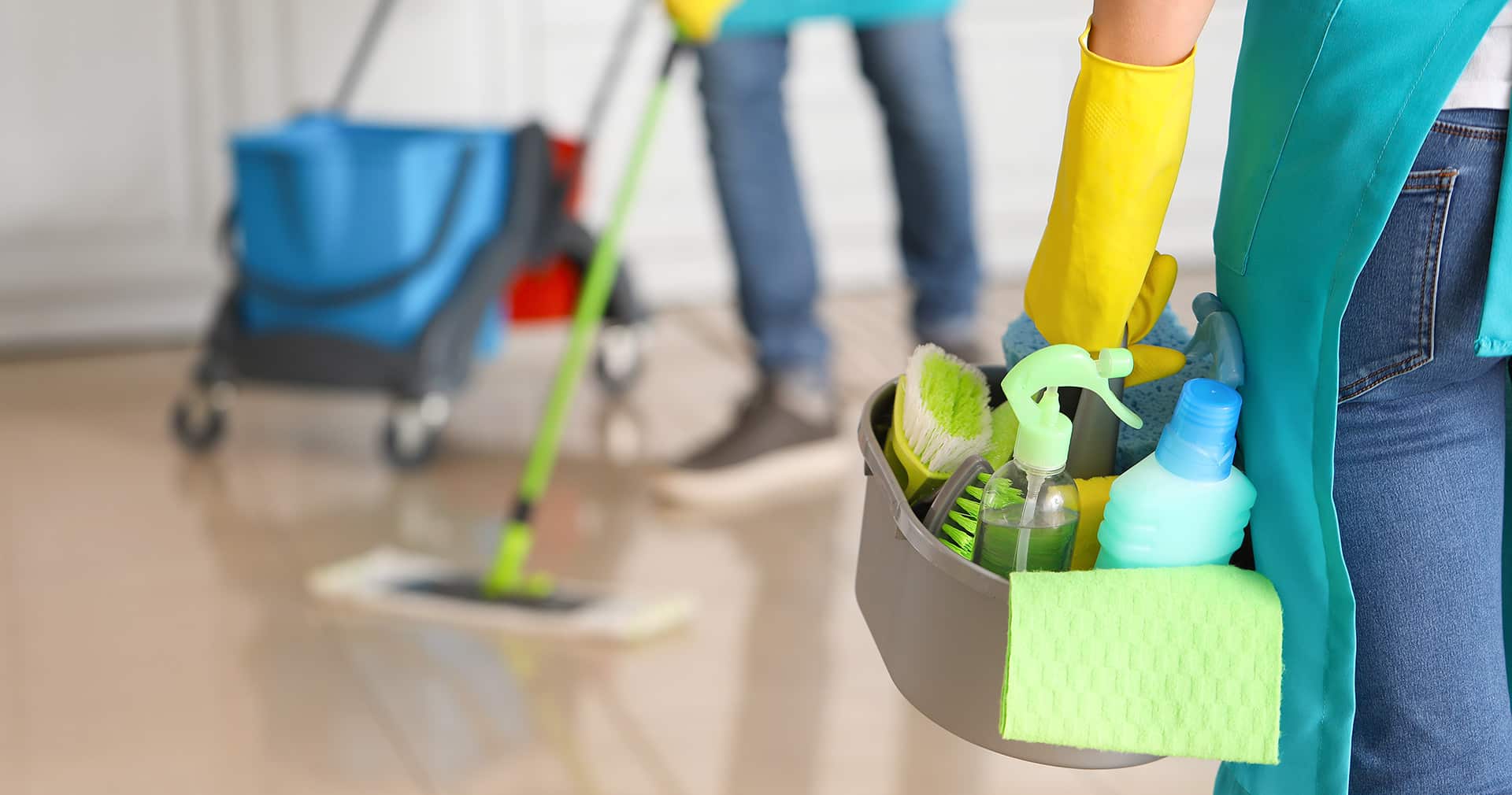Your Guide to Construction Business Cards
Business cards may seem like a minor detail. They’re not. Here’s why they’re important for your construction business. Plus, what you should include on your business cards.

Content Director
Thriving in today’s competitive construction industry means standing out every chance you get. You can’t afford to go unnoticed.
Every single interaction needs to represent your business in a positive way. Your first handshake needs to be welcoming. Your final thank you needs to be sincere. And your business card needs to match your personality, values, and commitment to your customers.
Business cards may seem like a minor detail. But they’re not.
Your business card is there during your first interaction with a customer. It includes critical contact information. It reminds customers of your branding, logo, and business name. And it literally carries your name.
In a service business like construction, business cards are essential for spreading the word about your business. Even in a digital world, business cards remain an easy way to hand off important information.
In this article, we’ll explain why construction business cards are important for your business. We’ll also walk you through the must-have elements to make your business card a memorable one.
Here’s how to end up on your customers’ fridge instead of in their trash can.
Why Business Card Design Matters
Your business card is an important part of the first impression you make on prospective clients.
If it’s well-designed, it’ll make you look professional, competent, and trustworthy. If not, it could do more harm than good.
That’s because business cards are a marketing tool. They promote your construction business, from the design to the information they include. They set the tone for what it will be like to work with you.
It’s not overstating it to say they speak on your behalf.
A well-designed business card can even make it easier for potential clients to remember your construction business when they’re ready to start their next project. That’s right. Your business card can help you close deals.
Here are some ways a business card can benefit your business.
Enhance Customer Convenience
Customer service is integral in the construction industry. And as you well know, lip service isn’t enough. Customers expect more.
Customer service needs to be embedded in every single touchpoint. Your business card is one of those touchpoints.
Business cards are convenient. They’re cheap, easy to hand off, and easy to keep track of. Customers and prospects won’t have to search for your contact info when they’re ready to reach out.
Network Anywhere
Ever met someone when you’re not in work mode only to discover they need your services?
Of course you have. In fact, that probably happens all the time.
Your business card allows you to make those chance meetings meaningful. You can easily share your contact info on the fly.
We recommend that you always keep a few business cards on you.
Facilitate Referrals
Plenty of construction pros get the bulk of their business from referrals.
That makes sense. A happy customer is likely to talk about your work with their friends, coworkers, and peers. If that same customer has one of your business cards, they have an easy way to pass your contact info along.
Not only that, but you can leave a handful of business cards with other professionals in your area who offer complimentary services. You can promote them, and they can promote you.

The 5 Essential Elements of a Construction Business Card
The process of winning prospective clients can be challenging. But there’s some good news. Spending on construction is growing.
It’s growing fast.
Monthly spending on private construction in April 2021 was $750.25 billion, up from $597.67 billion in April 2020. That’s a huge leap. And as more potential clients decide to move forward with their construction projects, you don’t want to get left behind.
Now is the time to stand out.
While it’s small, your business card can help you make a lasting impression. But only if you include the right information displayed in the right way.
Here’s what your business cards need to include.
1. Your Logo
Your logo is like shorthand for your company.
It gives insight into what you do and who you are. It’s a foundational part of your company branding, right down to the colors and font. If your logo is particularly strong, potential customers will know your business by your logo alone.
You need to be sure to include your logo on your business card.
2. Your Company Name
Like your logo, your business name is kind of important.
Make sure your business name is easy to read and clearly displayed. While there are minimalistic business card designs out there, we’ve yet to see even one that leaves the company name off.
3. Your Name and Title
Your name and job title need to be there, too. After all, you want to make it easy for potential clients to get in touch with you.
Be sure to use your full name (first and last) and your job title. If you’re a sole proprietor, then your title could simply be “Owner.”
You want potential clients to know who they can expect on the other end of the line when they call.
4. Your Contact Information
In terms of generating new business, your contact info is perhaps the most critical element on your business card.
Without your contact information, potential customers can’t reach out, request a quote, or schedule a job.
We recommend that you include the following:
- Your work email address
- Your personal work phone number
- Your business’s physical address
5. Your Company’s Web Address
Your website is the digital home for your company. It contains a trove of valuable information prospective clients will want to see. (And if you don’t have a website, this is a good chance to encourage you to get on that.)
Include your web address on your business card. That way, potential customers can quickly jump online and look you up.
Bonus Business Card Options
In addition to the 5 things listed above, we’d like to suggest 2 more options. Add these to your business card if they fit your business. If not, no worries.
Your Social Media Handles
Plenty of construction industry professionals use social media to market their services and nurture relationships with clients and prospects.
If you’re one of them, be sure to include your social media information.
A QR Code
Business cards are evolving with technology. Many organizations choose to include a QR (Quick Response) code to help prospects connect the dots.
A QR code works like a barcode. Folks can scan it with their smartphones to quickly access your website.
While they’re hardly necessary, QR codes can be a useful add-on.
Construction Business Card Design Best Practices
With the must-have elements taken care of, the next challenge in your construction business card journey is design.
For some people, business card design comes naturally. For most of us, it’s a challenge.
How can you arrange your business card in a way that’s both aesthetically pleasing and practical? Just follow these 3 design best practices.
1. Prioritize Legibility
If a business card looks amazing but isn’t legible, it kind of defeats the purpose. That’s why the most important thing about design is readability.
You want your business cards to be easy to read, with clear font and well-defined colors.
Make sure you consider each of the following:
- The font. Choose a font that’s on-brand and clear. Choose a font size that is easy to read at an arm’s distance.
- The colors. Ensure the color of the text is easy to see against the color of the background.
- The word count. Keep the number of words to a minimum. You don’t need to tell your business’s story. Instead, stick to the essential elements listed above.
- The white space. White space refers to the blank space around text and images. It gives each design element breathing room, which makes it easier to read.

2. Make It Memorable
You want your business to stand out in your prospective customer’s minds. Construction business cards are an excellent way to do that.
Here’s how:
- Include graphics, such as photos, icons, and (of course) your logo.
- Choose a unique material, such as clear plastic or even aluminum. (Just make sure it’s easy to read.)
- Add a photo of yourself.
3. Keep Everything On-Brand
If your brand’s colors are orange and blue, don’t make your business cards purple. Yeah, that will stand out. But it will also clash with your brand.
The same goes for how your business cards look, how they read, and even how they “feel.” For example, if you’re friendly, talkative, and engaging, an overly minimalist design may not fit you or your business.
Use similar words to those on your website. Make reading your business card like an extension of having a conversation with you.
Make an Impact with Your Construction Business Cards
Your business cards are an important part of your construction company’s branding. These tips and best practices can help ensure that your business cards make a good impression.
And that they leave a lasting one.
With a little effort, your construction business cards can be a powerful marketing tool. Here’s what you can do to get started designing your next business card right now, today:
- Make a list of the situations where you might hand out business cards. This list will help you get an idea of the folks you’re designing your business cards for. You’ll also begin to get a sense of the kind of design that will make the most sense.
- Look up a few business card designs online. A simple Google search will return thousands of images. You can use these for inspiration and ideas.
- Decide who at your company should have business cards. If you run a business with several employees, everyone won’t need business cards. There’s no reason to spend that kind of money. Limit your list to business leaders and sales folks.
- Check out a free design tool, like Canva. Canva is easy to use, even if you’ve never worked with a design tool. If you’re going to design your cards yourself, we highly recommend it.
Ashley’s professional experience includes content creation of all kinds, from articles and infographics to websites and whitepapers. When she’s not working, she enjoys dark coffee, dad jokes, and fiction—mostly horror and urban fantasy.

Business Solutions For Field Service Pros
EverPro offers specialized solutions designed for home and field service professionals. We’ve got the business tools to help you get the job done.



